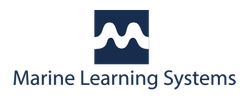How to Create an Application Modernization Roadmap
April 19, 2022

New: We have released our application modernization roadmap starter template. Download it today and accelerate your digital transformation!
Overview
Application modernization is a hot topic in the business world today. If you're like most organizations, you have a mix of applications critical to your day-to-day operations alongside applications that are rarely or no longer used or needed. As your business grows and evolves, it's important to take a step back and assess which applications need to be modernized to keep up with the competition.
Businesses need to adapt to changing market conditions and customer needs quickly to stay competitive. By modernizing their applications, companies can boost efficiency, reduce time to market, and enhance customer experiences.
What is application modernization
Application modernization is the process of updating application software to make use of newer infrastructure, programming languages, frameworks, or database technology. The main goal of application modernization is to improve performance, scalability, resilience, and security while also reducing costs.
Approaches to application modernization
Most times, application modernization involves rewriting legacy code to work with newer technologies. However, it can also consist of simply updating dependencies or moving an application to a cloud-based platform. Some applications can be modernized by merely adding new functionality to take advantage of technical innovations, without any modifications to existing code.
Benefits of modernizing legacy applications
Regardless of the approach, application modernization can help organizations ensure their applications continue to be responsive to changing business needs and enhance the customer and employee experiences.
Outdated applications can cause several problems, including reduced performance, high operating costs, and security vulnerabilities. Application modernization can help businesses reduce the resources required to run an application, increase the frequency and reliability of updates, improve uptime and resiliency, and reduce exposure to cyberattacks.
Last but not least, since most companies have significant investments in their existing application portfolio, from both a financial and operational standpoint, it is often more efficient to modernize rather than retire these systems and start over.
One way to create an application modernization roadmap is first to identify the most critical business capabilities. These are the areas that will have the biggest impact on the company's bottom line.
Common challenges
The first challenge in any modernization effort is the selection of an optimal initial set of applications to modernize. Some organizations do not actively maintain an up-to-date application inventory, resulting in newer applications and cloud services not being accounted for. Even if the application inventory is current, organizations may be missing a formal decision model to help inform the best approach for any given application. This makes it hard to measure ROI and TCO to both categorize applications and measure the impact of the modernization, once completed.
Sheer complexity and sprawl of an organization's application portfolio can limit visibility, making it hard to see where duplication is happening, or where applications are only running because the retirement plans were never completed.
Lack of skilled personnel familiar with modern infrastructure and application development techniques is another barrier. This can limit the field of view on what's possible, slow down the modernization effort, and lead to suboptimal modernization outcomes.
In addition, application modernization can require significant investment in new hardware, software, and training. This can be mitigated by taking an incremental approach to modernization, focusing on low-effort high-value applications first, to reduce risk, minimize the time to realize value, and skill up your team fast.
Creating an application modernization roadmap
We recommend approaching application modernization as a structured, iterative process comprised of the steps described below.
1. Discover
Create or update application inventory, and gather application data in a normalized format. Extract the data from your configuration management databases, IT or software architecture spreadsheets and knowledge base. You can also employ automated application discovery tools specific to your workloads. Gather development, operations and performance metrics from your ticket tracking system, CI/CD tools, and APM systems, such as Splunk or NewRelic. Your data storage systems can also be a good source of performance data.
2. Categorize and Prioritize
With an up-to-date application portfolio and good metrics, you can categorize applications based on business value and effort to modernize.
Assign higher business value to applications that support critical business capabilities. Work with business stakeholders to identify and prioritize business capabilities in alignment with business strategy. This ensures the modernization effort is focused on creating more immediate business value.
Quantify the effort to modernize by accounting for and balancing such factors as application complexity, size, team skills, risk of disruption, data migration effort, etc.. 6R Analysis (rehost, replatform, refactor, repurchase, retire, retain) is a widely used application portfolio rationalization technique that helps to evaluate the relative effort of modernizing each application, in increasing order of required effort:
- Retire applications that you don't require anymore and can be turned off
- Retain applications that are not good candidates for modernization because they have been recently installed or upgraded, or they're just not that important to the business
- Rehost applications with little or no modifications to newer or cheaper infrastructure
- Repurchase new or upgraded products or services to incorporate into your modern portfolio
- Replatform applications by updating them to leverage third party services, such as managed cloud database instances, without changing the core architecture
- Refactor is effectively the 'application modernization', with significant changes to application architecture and code to take advantage of modern cloud-native services.
Create four application cohorts to modernize in order:
- Cohort 1 high-value/low-effort applications, allowing you to realize quick ROI and hone your modernization process
- Cohort 2 high-value/high-effort applications, leveraging the experience and knowledge from modernizing the first cohort
- Cohort 3 low-value/low-effort applications, low-hanging fruit once all high-value applications have been modernized
- Cohort 4 low-value/high-effort applications
3. Plan
Understand the current state of each application in the current cohort and map out the modernization journey. Extract and hone blueprints for each on the migration and modernization strategy (6R) to be reused for later cohorts. Typically, modernization happens in multiple stages as applications need to continually service customers and employees.
4. Execute
Carefully execute on the modernization plan. Adjust mid-flight if needed to ensure optimal outcomes with minimal disruptions. Balance speed of execution with assimilation of new knowledge. Document recipes for application transformation and automate new delivery processes. Establish consistent application telemetry and monitoring for the newly modernized applications.
5. Assess
Evaluate the ROI of the modernization effort and compare with the projected ROI. Reflect back on the process and the outcomes and address any shortcomings in the next iteration/cohort.
How do we help
Aligned helps you get the most out of your application modernization effort, supporting you all along the process by:
- Validating the prioritized application map by leveraging our experience in estimating modernization effort & cost
- Identifying areas of commonality in the applications, and focusing on them to maximize the ROI of modernization
- Minimizing disruptions to business operations by breaking down the modernization effort in small manageable steps that also show immediate benefit
- Identifying and containing the impact of hard-to-modernize applications or application components.
Conclusion
Application modernization is an essential part of any digital transformation strategy. It helps businesses improve efficiency, reduce costs, and stay ahead of the competition. Application modernization is a structured data-driven iterative process that improves the performance of your application portfolio and helps drive a culture of engineering excellence in your organization.
Our experienced architects and engineers make the process of modernizing your legacy apps faster and cost-efficient. We minimize or avoid service interruptions, and help upskill your employees.
Let's talk through your app modernization goals and create and execute your modernization roadmap. Contact us today to find out how we can help you achieve your business goals.
Related Success Stories & Insights

We employed our expertise in application and database performance optimization to improve system performance for critical execution paths by up to 40%, resulting in faster time to insights for Genus' research team and portfolio managers. As an added benefit, the load on data systems was reduced, delaying the need for costly infrastructure upgrades.

Upgrading legacy software applications can improve efficiency, productivity, and security, integrate with other systems, enhance scalability, save costs, future-proof your business, provide end-to-end data governance, and attract new talent. Investing in application modernization helps companies to stay competitive and succeed in the long run.
Client Testimonials
We're extremely proud of our track record. Hear real feedback from our clients:
CONNECT WITH OUR TEAM NOW
Learn more about how Aligned can help you with Application Development & Modernization, Data Engineering & Analytics, and Cloud Adoption.







